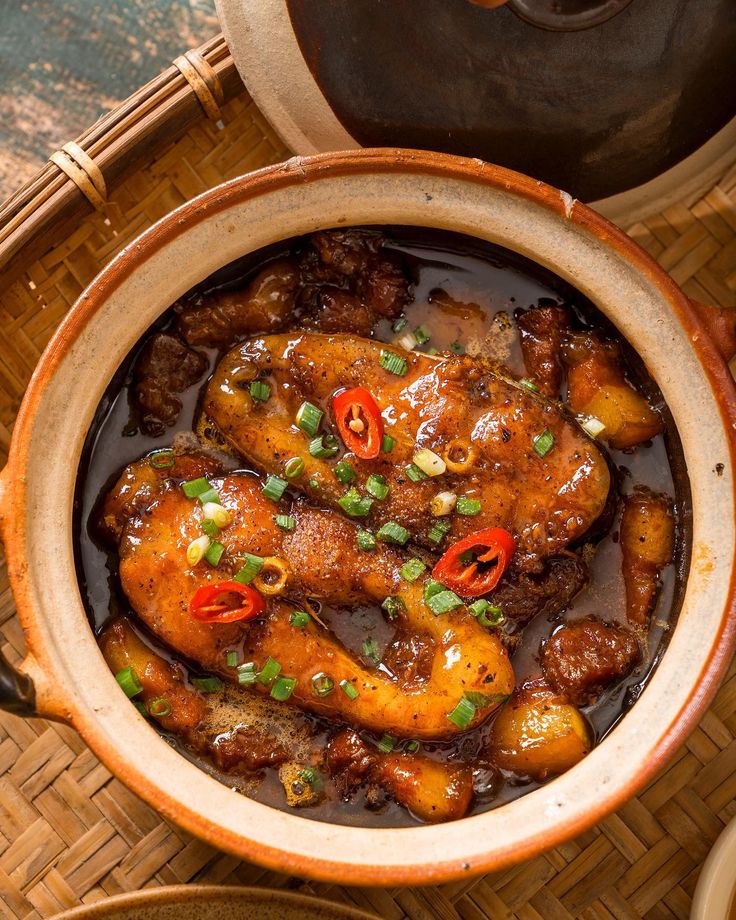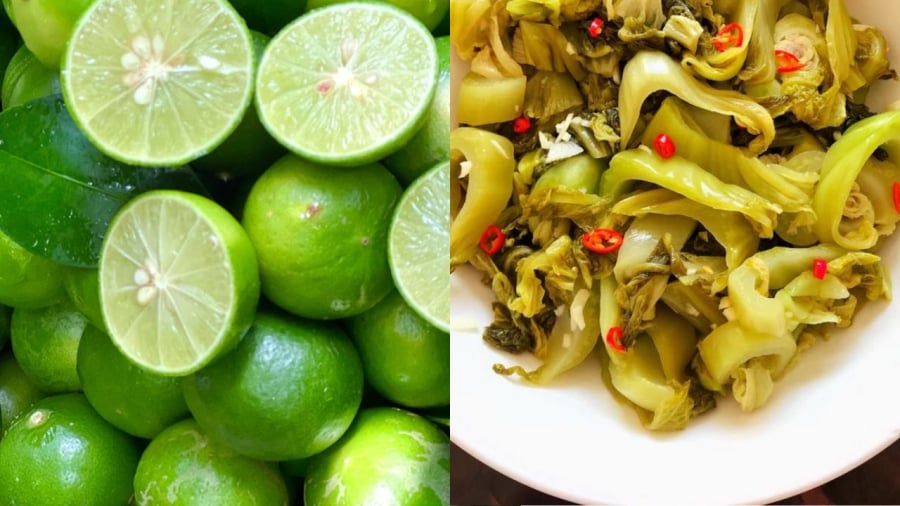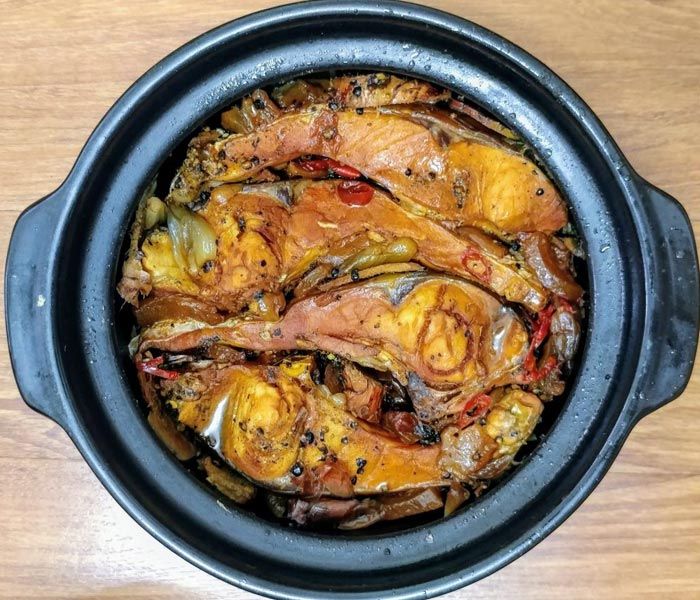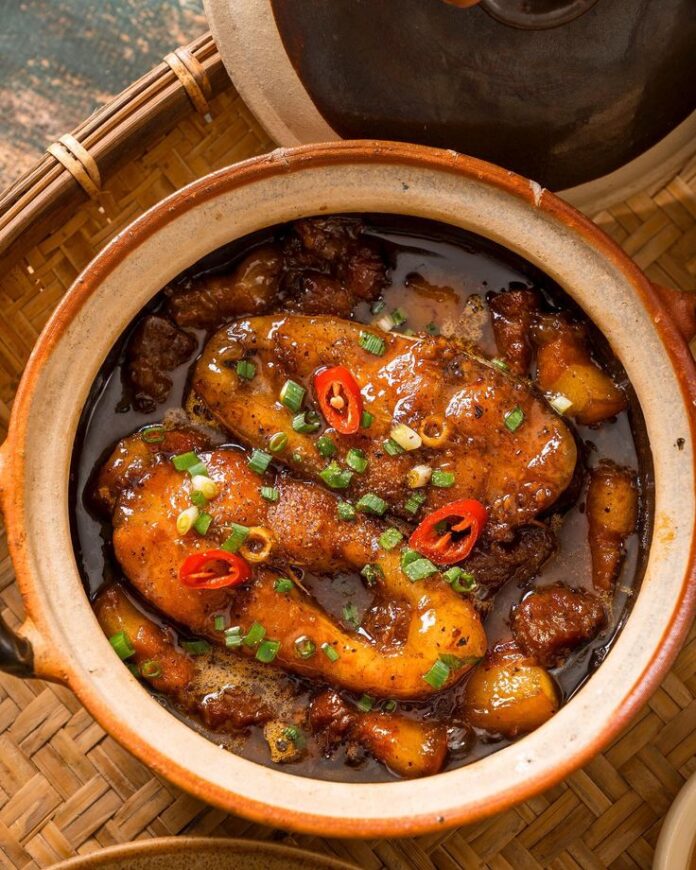Braised fish is a quintessential Vietnamese delicacy, especially prevalent in Northern family meals. A delicious pot of braised fish requires not only a savory flavor but also tender meat, soft bones, and intact fillets. However, achieving the traditional braising technique, especially in urban settings with gas stoves and electric pots, is no easy feat.
Secret to Traditional Braised Fish: Slow Cooking for Tender Bones
Following the age-old method, fish is braised over a wood or charcoal fire, and then the pot is buried in rice husks for 8-12 hours. This slow cooking process results in tender bones, firm flesh, and a natural sweetness. While laborious, it imparts a distinctive, unmistakable flavor.
Additionally, a traditional village secret involves adding lemon juice to expedite bone softening.

In modern life, braising fish in an electric pot or on a gas stove shortens the cooking time, often resulting in undercooked, pungent, or disintegrated fish. But fear not! With the following tips for braising fish, you can achieve tender bones and mouthwatering flavors right in your modern kitchen.
1. Proper Fish Preparation to Eliminate Pungency
Select fresh, firm-fleshed fish like carp, grass carp, goby, or mackerel.
Clean the fish with ginger wine or salt grains to remove the dark membrane inside, effectively reducing any pungency and firming up the flesh.
After cleaning, briefly dip the fish in boiling water to firm up the meat, ensuring it stays intact during braising and eliminating any residual pungency.

2. Essential Spices for a Delectable Braised Fish
Depending on your taste and region, you can choose from these popular braised fish styles:
Braised Fish with Soybean Paste: Use fermented soybean paste, fish sauce, galangal, lemongrass, and a touch of MSG.
Braised Fish with Pickled Vegetables: Combine pickled mustard greens, fish sauce, MSG, onions, and chili peppers.
Braised Fish with Green Bananas: Add green bananas, pork belly, salted fish, and green tea leaves.
Galangal Braised Fish: Sliced galangal, pork belly, lemongrass, caramel sauce, and peppercorns.
Tip: Lining the pot with green tea leaves or dry tea not only prevents pungency but also imparts a subtle, pleasant aroma. Additionally, sour ingredients like sour fruit, vinegar, or lemon juice effectively tenderize the meat and bones while eliminating any fishy odor.

3. Braising Fish to Perfection with an Electric Pot – Convenient and Tasty
Today, multi-functional electric pots or rice cookers are a godsend for braising fish, delivering traditional flavors with modern convenience. Here’s how:
Prepare the pot base: Line the bottom with green tea leaves, pork rind, galangal, or split sugarcane to prevent scorching and impart a distinctive aroma.
If using soybean paste or galangal, add a few slices of fresh sugarcane for extra sweetness and fragrance.
Arrange the fish and spices: Place the prepared fish in the pot, add the supplementary ingredients, and pour in hot water just enough to cover the fish.
Avoid using cold water, as it may cause the fish to turn pungent and soften the meat.
Braise the fish: Turn on the electric pot until the water boils. Let it boil for about 5 minutes, then switch to the keep-warm setting to allow the spices to infuse the fish gradually.
After 10 minutes, turn on the pot again and cook for another 30 minutes before switching back to keep warm.
Repeat this process for approximately 6-8 hours, and you’ll have evenly cooked fish with tender bones and a rich flavor, all without falling apart.
Benefit: When using an electric pot for braising, you can freely attend to other tasks or even step out of the house for a few hours without worrying about burnt or charred fish.

4. Secret to Achieving the Perfect Braised Fish Color
A well-braised fish dish should not only taste amazing but also sport an appealing brown glaze. To achieve this:
Caramelize sugar: Add sugar to a pan and heat until it turns a brown glaze, being careful not to burn it.
Optionally, add sesame oil or Korean chili powder for an extra kick, especially if you prefer a spicy dish.
5. Tips for a Rich, Non-Stick Braised Fish
Line the pot with pork rind to prevent sticking and add natural richness to the dish.
Include thinly sliced pork belly to enhance the creamy texture and prevent the fish from drying out.
A traditional braised fish dish is more than just a tasty meal; it’s a blend of technique, patience, and culinary passion. Even if you live in a city with modern gas stoves and electric pots, following the above instructions will yield tender-boned, pungency-free, and savory braised fish reminiscent of the old-fashioned wood-fired method.
From now on, family meals will be cozier with tender, aromatic braised fish that tastes just like Mom used to make!
The Ultimate Delicacy: Overcoming Fear for a Taste of Quang’s Famous Delicacy
The arrival of the flood season in the lower Thu Bon River (Quang Nam) and Tra Khuc River (Quang Ngai) brings a unique gift from nature: the ‘con lich’ or ‘lach dong’, an aquatic species with distinct biological traits and a rich culinary value. With its unique characteristics and delicious taste, this creature is steadily gaining recognition as a prominent specialty of Central Vietnam.





































